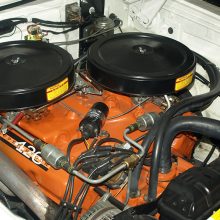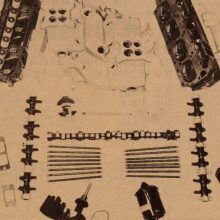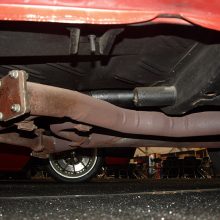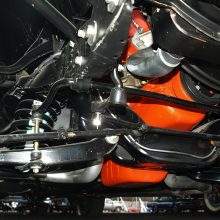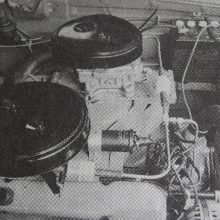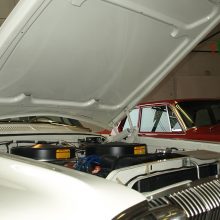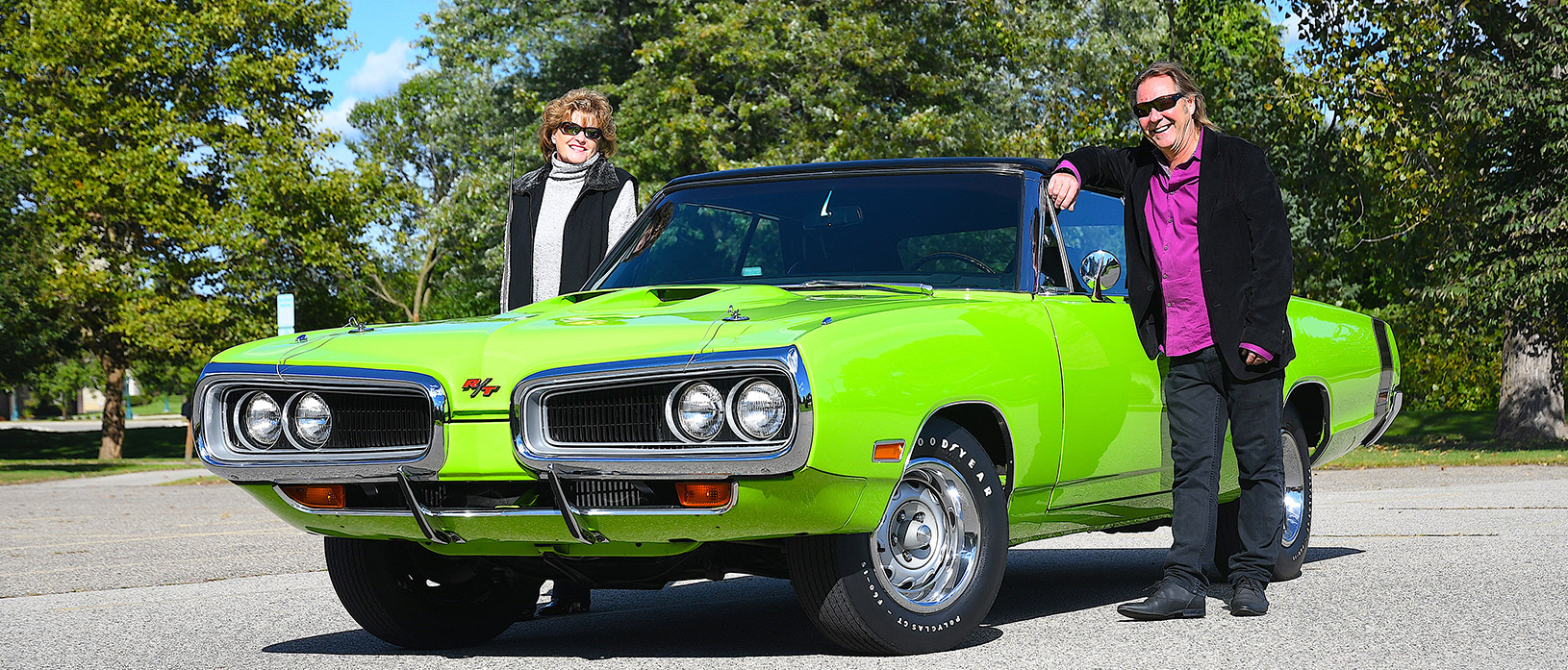Straight-Line Thinking
7 years ago Heritage
1962-64 Max Wedge
The very first Dodge Package Car designed for straight-line acceleration was the 1962-64 Max Wedge. At the same time, well-known competitors like the Chevrolet 409, Pontiac 421 and Ford 406 / 427 were also new on the scene and fighting for Super Stock supremacy. But while the 409, 421 and 427 came equipped with standard heavy-duty 11-inch drum brakes, extra-stiff frames, heavy-duty springs, steering knuckles, sway bars and shock absorbers, the Max Wedge shared its 10-inch drum brakes with six-cylinder models and rode on the base V8 suspension (but with special asymmetrical rear leaf springs and a longer cast iron pinion snubber).
Dodge’s rear axle ratio choice is also telling. While 421s, 409s and 427s came standard with tame 3.23 – 3.36 – 3.50:1 cogs (respectively, deeper gears were optional), the standard Max Wedge axle ratio was a drag-ready 3.91 unit. Think about it, with its 3.91 gears, lightweight 10-inch drum brakes, torque-biased rear springs, pinion snubber and no-sway-bar to restrict rapid front suspension rise on acceleration, the Max Wedge was set up to get up – and go! And no, weight-adding power steering and power brakes were not offered on any Max Wedge. Not even by special order.
The “go” part of the Max Wedge package was also more attuned to straight line use than the competition. Though based on the same 413 big block that quietly tooled along under the hoods of Chrysler Newports and Imperials, Chrysler engine designers bumped compression to as much as 13.5:1! The only hint that the Max Wedge was more temperamental than a 383 or 361 big block was a bright yellow sticker warning the driver not to run at wide open throttle for more than 15 seconds at a time.
This was due to the high-volume oil pump’s ability to suck the standard oil pan empty during prolonged high-speed use. The same threat was there for Brand-X drivers, Chrysler just happened to be brave enough to acknowledge it. As racers quickly learned, the remedy was a deep, 8-quart capacity oil pan. But considering that a typical Max Wedge could cover the ¼-mile in well under 13.5 seconds, the 15-second warning wasn’t a show-stopper.
And about that intake manifold, unlike the 421, 409 and 427 that teased buyers with tri-power and dual-quads – but came standard with a ho-hum single 4-barrel jug – every Max Wedge inhaled through the closest thing to “manifold art” ever seen on a Detroit production engine. With its integral 15-inch runners (from throttle blade to intake valve), the cross ram adds free supercharging while making 410 to 425 “advertised” horsepower (real output is well over 450 before tuning).
One has to ask, was Dodge cutting corners by using standard brake and suspension bits on the Max Wedge package? The answer comes down to the fact that the all-new-for-1962 unit-construction body shell used on all Max Wedges was as much as 500 pounds lighter than the larger, heavier body-on-frame Brand-X offerings. This allowed the smaller, lighter underpinnings to do the job with plenty of safety margin. Case closed. In fact, this was the legendary B-body that framed later legends like the Charger and Coronet.
Visit past Packaged Performance Installments:
Future Packaged Performance Installments:
- Less is More (1964-65 330 and Coronet Race HEMI)
- Junior Dynamite (1966 D-Dart)
- Coronet Stripped for Success (1967 WO23 Lightweight Street HEMI)
- Dodge Drops the A-Bomb (1968 LO23 HEMI Dart)
- The Ultimate Big-Cube-Engine-In-Small-Car Offering (1969 Dart 440)
- “They Are Not Race Cars” (1969 ½ Super Bee Six Pack)
- NOT For Street Use (2009 Dodge challenger LC22R Drag Pak)
- Sneak Peak (1320 Concept)

